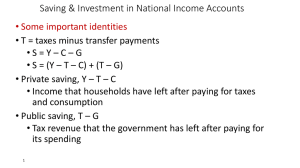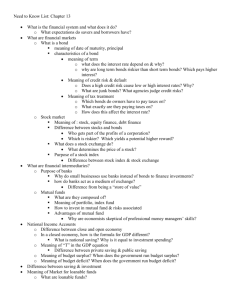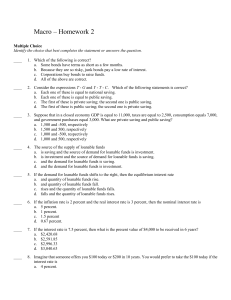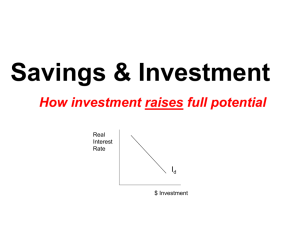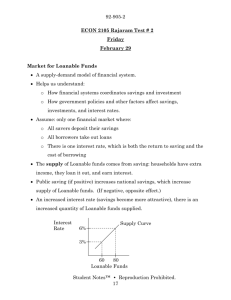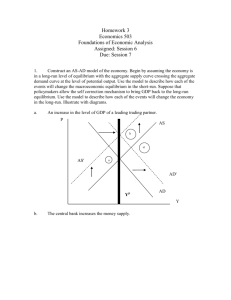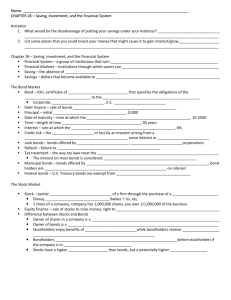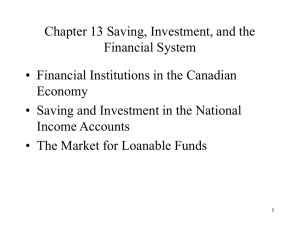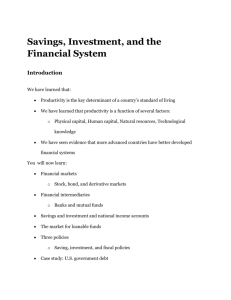Name Date_____________ Period ______ Chapter 26 Review
advertisement
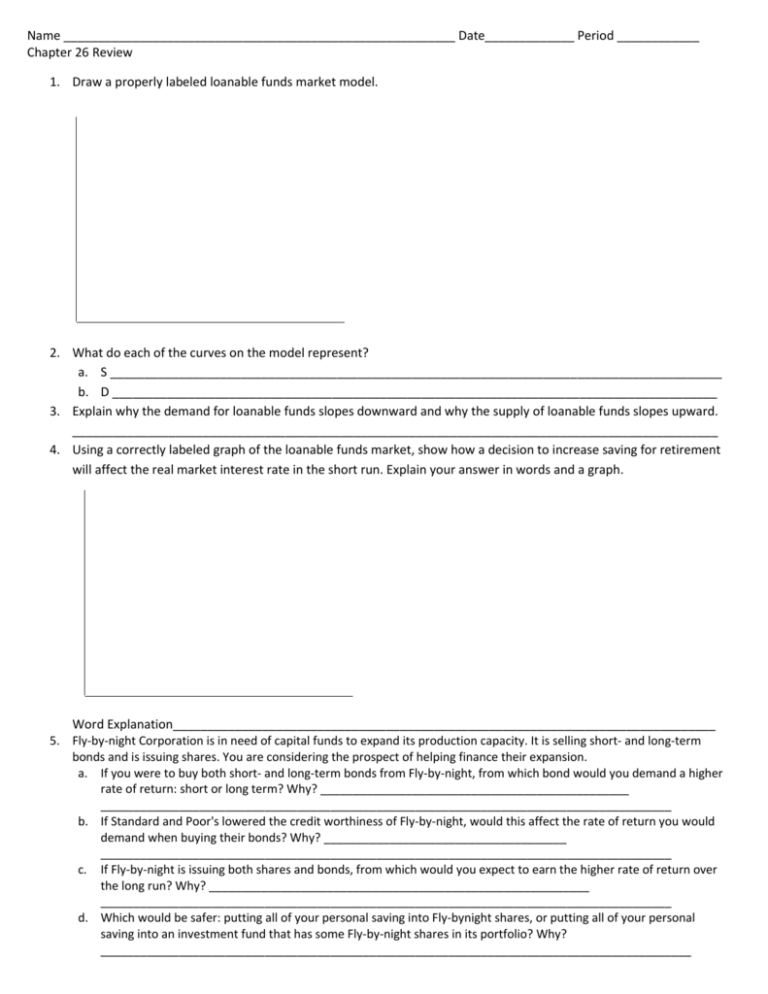
Name _________________________________________________________ Date_____________ Period ____________ Chapter 26 Review 1. Draw a properly labeled loanable funds market model. 2. What do each of the curves on the model represent? a. S _________________________________________________________________________________________ b. D ________________________________________________________________________________________ 3. Explain why the demand for loanable funds slopes downward and why the supply of loanable funds slopes upward. ______________________________________________________________________________________________ 4. Using a correctly labeled graph of the loanable funds market, show how a decision to increase saving for retirement will affect the real market interest rate in the short run. Explain your answer in words and a graph. Word Explanation_______________________________________________________________________________ 5. Fly-by-night Corporation is in need of capital funds to expand its production capacity. It is selling short- and long-term bonds and is issuing shares. You are considering the prospect of helping finance their expansion. a. If you were to buy both short- and long-term bonds from Fly-by-night, from which bond would you demand a higher rate of return: short or long term? Why? _______________________________________________ _______________________________________________________________________________________ b. If Standard and Poor's lowered the credit worthiness of Fly-by-night, would this affect the rate of return you would demand when buying their bonds? Why? _____________________________________ _______________________________________________________________________________________ c. If Fly-by-night is issuing both shares and bonds, from which would you expect to earn the higher rate of return over the long run? Why? __________________________________________________________ _______________________________________________________________________________________ d. Which would be safer: putting all of your personal saving into Fly-bynight shares, or putting all of your personal saving into an investment fund that has some Fly-by-night shares in its portfolio? Why? __________________________________________________________________________________________ 6. Use the saving and investment identities from the National Income Accounts to answer the following questions. Suppose the following values are from the national income accounts of a country with a closed economy (all values are in billions). Y = 6,000 T = 1,000 C = 4,000 G = 1,200 a. What is the value of saving and investment in this country? _____________________________________ b. What is the value of private saving? _________________________________________________________ c. What is the value of public saving? _________________________________________________________ d. Is the government's budget policy contributing to growth in this country or harming it? Why? 7. The following information describes a loanable funds market. Values are in billions. a. Plot the supply and demand for loanable funds in Exhibit 1. What is the equilibrium real interest rate and the equilibrium level of saving and investment? __________________________________________ b. What "market forces" will not allow 2 percent to be the real interest rate? _______________________ _______________________________________________________________________________________ Exhibit 1 8. Suppose the government suddenly increases its budget deficit by 400 billion. What is the new equilibrium real interest rate and equilibrium level of saving and investment? (Show graphically in Exhibit 2.) Exhibit 2 9. Starting at the original equilibrium, suppose the government introduces an investment tax credit that stimulates the demand for loanable funds for capital investment by 400 billion at any real interest rate. What is the new equilibrium real interest rate and equilibrium level of saving and investment? (Show graphically in Exhibit 3.) 10. With regard to (4) and (5), which policy is most likely to increase growth? Why? ________________________ ____________________________________________________________________________________________
